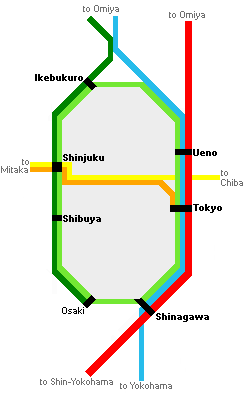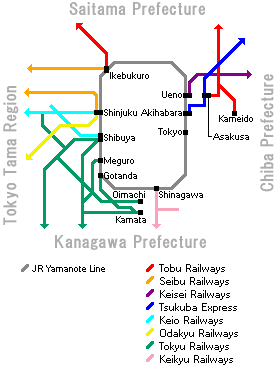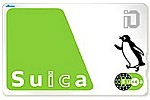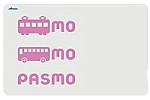Basic Orientation Tokyo is covered by a dense network of train, subway and bus lines, which are operated by about a dozen different companies. The train lines operated by JR East and the subway lines are most convenient for moving around central Tokyo. Tokyo's most prominent train line is the JR Yamanote Line, a loop line which connects Tokyo's multiple city centers. The city's 13 subway lines are operated by two companies and run largely inside the Yamanote circle and the areas around Ginza and Shitamachi. Most of the many suburban train lines commence at one of the six major stations of theYamanote Line (Tokyo, Ueno, Ikebukuro, Shinjuku, Shibuya and Shinagawa). 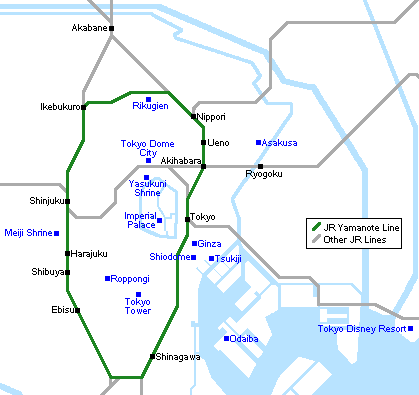
The map below shows Tokyo's major railway stations and the five JR lines that are most relevant to people who travel within central Tokyo.
Tokyo's subway network is operated by two companies, the Toei Subways with four lines, and Tokyo Metro (formerly known as Eidan Subways) with nine lines. Together, they densely cover central Tokyo, especially the area inside the Yamanote circle and the areas around Ginza and Shitamachi. Note, that at their terminal stations, the trains of some subway lines continue to operate on the tracks of different companies on suburban train lines. For example, the Chiyoda Subway Line is directly connected with the suburban Odakyu Line at Yoyogi-Uehara Station, and trains on the Fukutoshin Subway Line continue to run on the tracks of the Tokyu Toyoko Line at Shibuya Station. Besides JR East and the two subway companies, most other railway companies connect Tokyo with the metropolis' outer regions and surrounding prefectures. Their lines typically start at one of the stations of the JR Yamanote Line. Many of the private railway companies also operate department stores usually at their train lines' major stations.
A whole variety of day passes is available for the Tokyo area, however, most of them are overpriced and/or not very practical because they do not cover all of Tokyo's train and subway lines. Consequently, single tickets or prepaid cards usually come cheaper, especially if you plan your city sightseeing in a geographically wise way. Prepaid IC cards are generally the recommended way to get around Tokyo. Prepaid cards don't give you any discounts over single tickets, but they provide convenience as you can ride virtually any train or bus in Greater Tokyo(and many other major cities in Japan) with just a simple swipe over a card reader. They can also be used to make quick purchases at a constantly increasing number of shops in Tokyo (and across the country).
Two types of IC cards are available for purchase in Tokyo: Suica cards at JR stations and Pasmo cards at non-JR stations. Furthermore, eight IC cards from other major cities of Japan can also be used on the trains and buses of Tokyo, including Icoca, Kitaca, Toica, Manaca, Pitapa, Sugoca, Nimoca and Hayakaken. Foreign tourists note that there are packages that combine a prepaid card with airport transportation:

Only on days when you use trains or subways a lot, can it make sense to consider one of Tokyo's day passes. Day passes are sold at train stations and vending machines and are valid from the first train in the morning until the last train in the evening rather than for a 24 hour period.
The Japan Rail Pass, JR East Pass and JR Kanto Area Pass are valid only on JR trains and the Tokyo Monorail. They cannot be used on subways or any other non-JR train. |
||||||||||||||||||||||||||||||||||||||||||||||||||||||||
